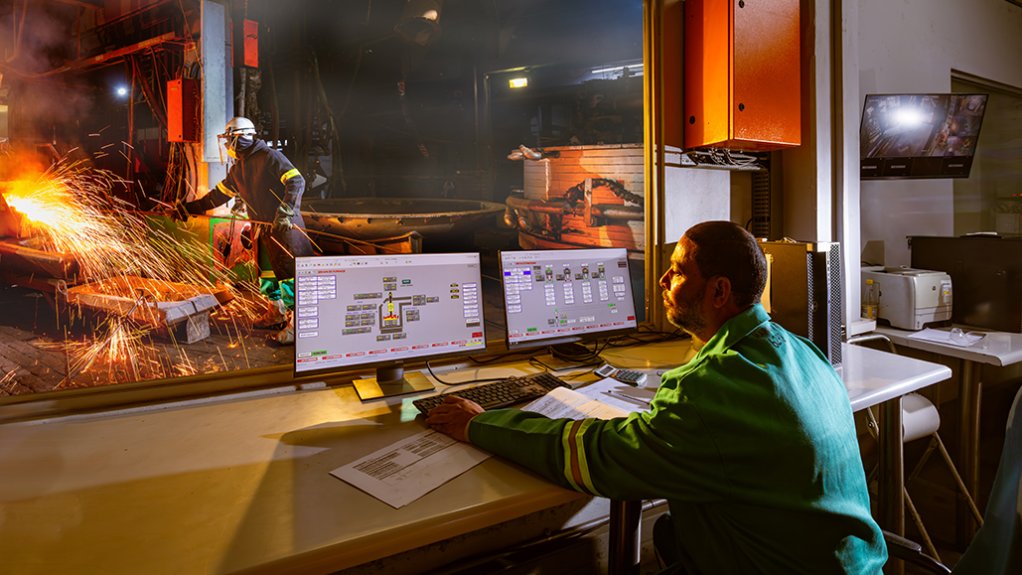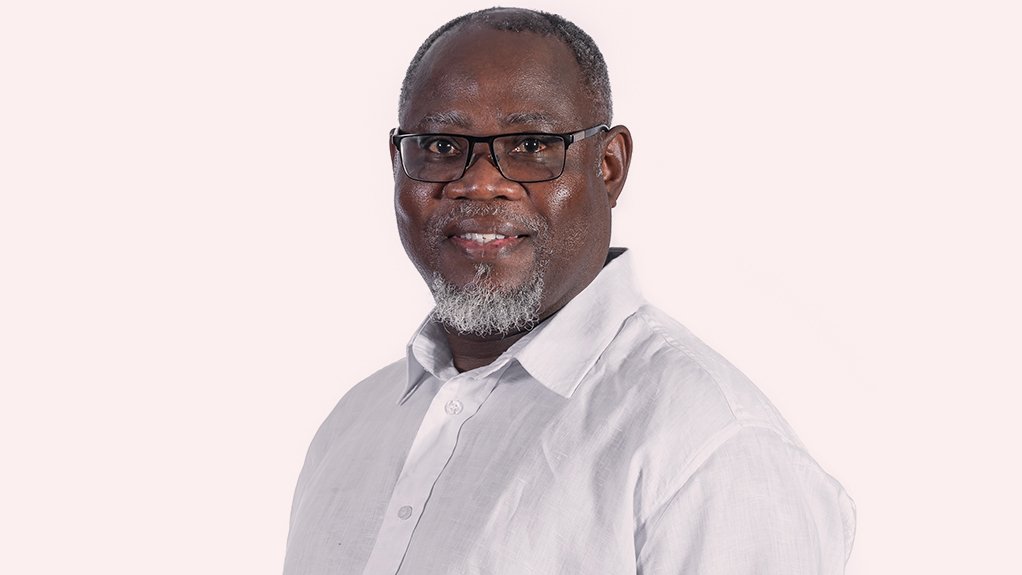JOHANNESBURG (miningweekly.com) – South Africa's national mineral research organisation Mintek has achieved a significant milestone in sustainable metallurgy by demonstrating production of manganese ferroalloys using carbon-free reductants.
This new cutting-edge method, called the HAIMan process, uses hydrogen and aluminium instead of traditional carbon-based materials, eliminating CO₂ emissions and generating zero waste. Simultaneously, it converts manganese-rich waste into valuable products, making the process both cleaner and more efficient.
With industries worldwide facing increasing pressure to reduce waste, cut energy use and lower carbon emissions, Mintek is putting South Africa at the forefront of green metallurgy.
Traditionally, making ferromanganese alloys required extremely high temperatures in electric furnaces, leading to large amounts of CO₂ emissions.
The HAIMan process changes this by replacing carbon-based reductants with hydrogen and aluminium; the hydrogen burns cleanly and produces only water instead of harmful gases.
HAIMan consists of two steps, the first being the pre-reduction step and the second the smelting step.
Pre-reduction uses hydrogen gas as reductant, and the smelting step uses aluminium metal as reductant aluminium metal.
By eliminating CO₂ emissions, HAIMan not only transforms waste materials into valuable resources but also achieves a remarkable zero waste outcome.
Further, the slag generated during the smelting phase is effectively recycled, allowing for the recovery of alumina, grey mud, and residues that can be repurposed in cement manufacturing.
“This method stands at the forefront of sustainable practices, significantly reducing environmental impact while enhancing energy efficiency. The HAIMan process promises a cleaner, greener future for alloy production, showcasing that innovation can meet industrial needs without compromising our planet,” Mintek, located on Malibongwe Drive, in Randburg, Gauteng, stated in a release to Mining Weekly.
“Ferromanganese alloys are critical to South Africa’s economy, as they are widely used in iron and steel production and the welding industry. Recognising the urgent need to revitalise this sector, Mintek has partnered with leading organisations from Europe and South Africa, with support from the European Union’s Horizon programme, to implement the HAIMan process. This initiative aims to introduce the most energy efficient production methods while significantly cutting CO₂ emissions,” the State-owned organisation explained.
Mintek pyrometallurgy division executive manager Dr Elias Matinde shared positive results from the latest HAIMan tests: "This testing successfully demonstrated carbon-free production of manganese ferroalloys with a manganese content exceeding 70%.
“Our environmental evaluations further confirmed negligible CO₂ emissions, highlighting the HAIMan process’s potential to significantly contribute towards decarbonising the production of manganese ferroalloys. We are extremely proud of the progress we are making in pyrometallurgy as we continue to showcase our expertise,” Matinde added.
Mintek CEO Dr Molefi Motuku emphasised that revitalising the ferromanganese industry was one of Mintek’s key strategic programmes.
"South Africa has an abundance of manganese, yet the country is not fully benefiting from its ferroalloy resources. Industry players, government, and researchers all agree that more must be done to develop local capacity, improve competitiveness and unlock greater economic value.
“Mintek is committed to revitalising the ferromanganese industry by driving innovation and commercialising cost-effective, low-carbon production technologies. The HAIMan process is a major step in this direction, helping to position South Africa as a leader in sustainable ferroalloy production while contributing to industrial growth, job creation and long-term economic sustainability," Motuku added.
KHWELAMET FERROMANAGANESE
Helping South Africa to return to being a producer of ferromanganese will be a major 2025 focus of mining company Menar, its MD Vuslat Bayoglu has emphasised.
In an interview on day three of the Investing in African Mining Indaba 2025, Bayoglu conveyed his excitement about the prospect of his company being part of South Africa’s mining-linked reindustrialisation through the revival of an asset that was once the world’s biggest ferromanganese producer under the new name of Khwelamet.
Last year, Menar completed a transaction with Samancor involving the acquisition of the former South32/Anglo Joint Venture (JV) Metalloys ferromanganese asset in Meyerton, Gauteng.
“I have to give the credit to the South32/Anglo JV, which kept the asset in pristine condition,” Bayoglu noted.
Ahead of being placed on care and maintenance in 2020, Metalloys was the world’s largest ferromanganese producer and steps are now being taken restart it
“The idea is to prepare Khwelamet to be ready to be restarted, so this is going to be one of our important focuses this year,” Bayoglu told Mining Weekly.
The property’s large slag dump from which ferroalloys can be recovered is also of considerable value.
Interestingly, two of the smelter’s four furnaces are only ten years old.
AFRICAN RAINBOW MINERALS
In an interview with Engineering News & Mining Weekly, African Rainbow Minerals (ARM) Ferrous CE Andre Joubert also highlighted another key technological advance South Africa was making in the private sector with home-grown smelting technology that has the potential to re-establish this country as a global ferroalloys hub by enabling it to produce high-quality, low-cost ferromanganese and ferrochrome – and even some forms of steel to boot.
In addition, Glencore Operations South Africa CEO Japie Fullard described the results of the pilot testing of the new Proudly South African SmeltDirect technology are “looking great”.
Very importantly, ARM, headed by Dr Patrice Motsepe, and Glencore have been working together to commercialise SmeltDirect, which when retrofitted to existing smelters lowers the electricity requirement substantially, reduces costs to a level that could invite the competitive recommissioning of many of South Africa’s idled ferroalloy smelters, and paves the way for considerably greater environmental protection by also driving down carbon emission.
“This is something that can revitalise all the dormant plants that we’ve closed down over many years in South Africa,” Joubert remarked.
Capital cost hinges largely on the production volume required, with work done putting capital at about $175-million to $180-million per 200 000 tons a year, a fraction of what it would cost to establish a new greenfield plant from scratch.
EMAIL THIS ARTICLE SAVE THIS ARTICLE ARTICLE ENQUIRY FEEDBACK
To subscribe email subscriptions@creamermedia.co.za or click here
To advertise email advertising@creamermedia.co.za or click here













